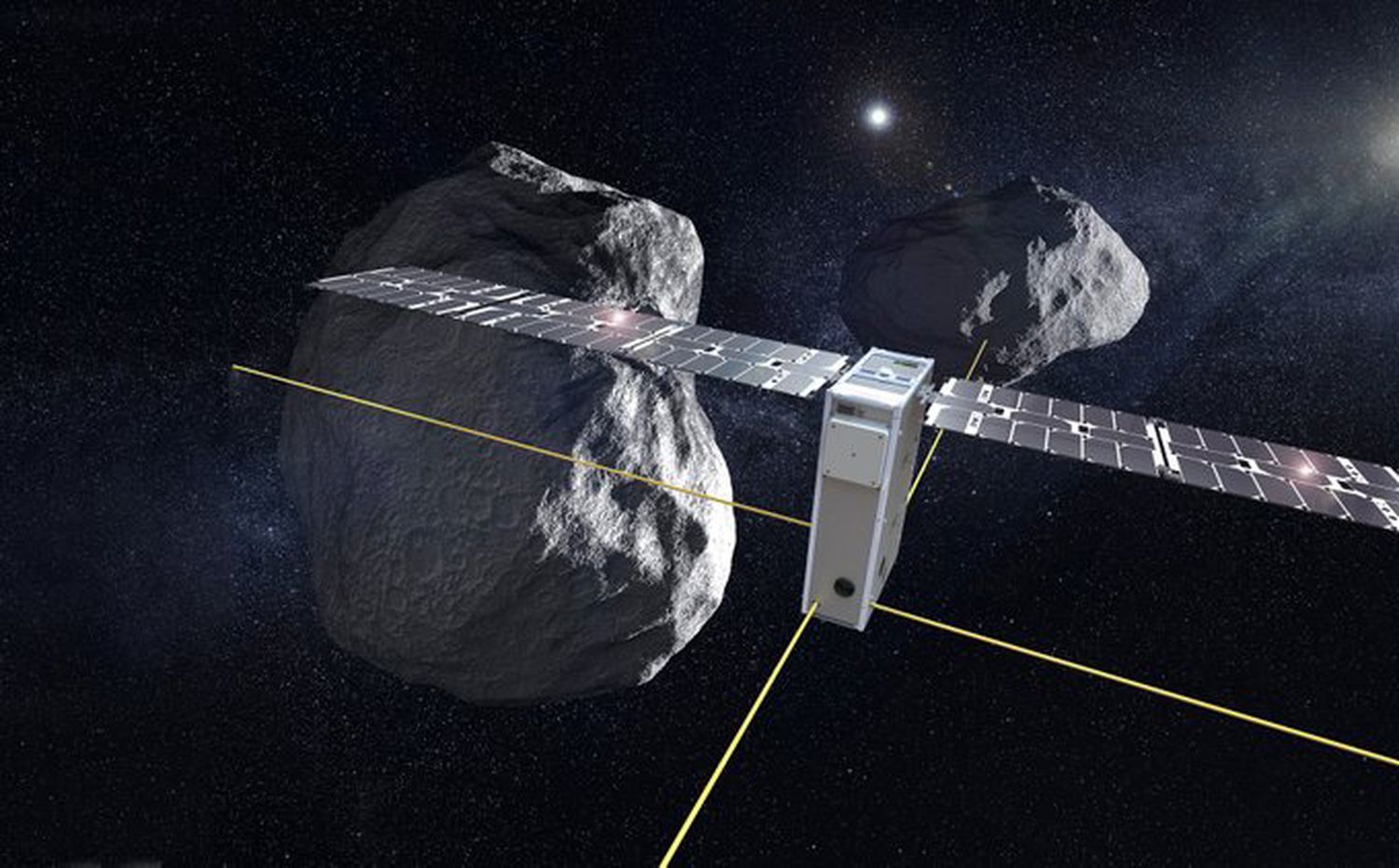They were lucky last Tuesday, to say the least. Engineers from the Emxys company had worked hard on the Ultraviolet and Visible Atmospheric Sounder (UVAS) project led by the Rocasolano Institute of Chemistry-Physics, which was going to send components into space to obtain information on atmospheric processes.
Their aircraft were to travel on the same flight that left French Guiana with the Spanish satellite SeoSat-Ingenio and that disappeared eight minutes after takeoff., ruining a decade of research and 200 million.
“Due to calendar issues, there was no time and our material remained on the ground,” explains Francisco García de Quirós, co-founder of the company together with José Antonio Carrasco. “It was a disgrace,” continues the telecommunications engineer and doctorate in space engineering from the University of Glasgow.
“As there are so few projects in Spain … launching a satellite is something unique , almost unique, it has been a shame.”
García de Quirós met Carrasco, a physicist from the University of Valencia and a doctorate in electronic engineering, at the Miguel Hernández University in Elche, where they both share work as teachers. With a career in the private sector behind them, in 2005 they decided to launch a spin-offto develop your industrial and entrepreneurial vision.
They thought it was a good idea to gain a foothold in sectors that needed highly reliable and precise electronic systems. “We founded the company with 3,000 euros and we were winning projects on issues related to our area of knowledge”, Francisco reviews.
In its first decade of life, Emxys managed to participate in three space missions as a subcontractor. “There came a time when, based on reinvesting the income, we had a great experience in space projects. We have never had losses ”.
Until in 2017 they decided to overturn the company’s orientation because the world was changing : from an exclusive environment of competition between countries, the aerospace world had turned to the so-called NewSpace giving way to an emerging private industry whose path was cleared by SpaceX, the Tesla founder’s company.
“It was a paradigm shift, a completely new approach that grew an industrial fabric around completely private satellite launches, something that was unthinkable years ago.”
They delved into the business model of small satellites, the cubesats, and focused on products, such as the development of a satellite platform with optical communications that did not depend so much on national investment plans. “But the [profit] margins in this industry are getting smaller and smaller. If we wanted to jump to this model we needed help ”.
They opened a financing round two years ago, and thanks to the training they received at Wayra (from Telefónica) and Javier Navarro, their financial partner through Vinca Capital, they learned to communicate their project without sounding like Chinese. A couple of weeks ago they received an injection of two million from the Mundi Ventures fund and the CDTI through Innvierte.
“The new approach is a suitable bet for a company of our size”, reflects the co-founder, who sees an opportunity beyond the crisis at the moment. “It is good for us to take this baton now, with a size that allows us to modulate our infrastructure and adapt it to the real market demand.”
With around 400,000 euros in turnover and eight employees, they know that it is not easy to make their way from a country that invests little in innovation. “Europe has gotten used to being behind countries like the United States or China.
Here the industry is very mature, with a high level of state protection that allows it to preserve its structures even at the cost of efficiency ”, compared to the dynamism of other markets.
Emxys hopes to show that there is water in the desert. “Our immediate future is difficult to establish. We want to get into an optical communications segment, which has no clear competitors in Spain. We want to become a global satellite integrator manufacturer.
The market is gigantic, and we will be able to occupy a fraction in the next four or five years ”. And also show that two entrepreneurs over 40 can open a promising path in space.



 Bitcoin
Bitcoin  Ethereum
Ethereum  Tether
Tether  XRP
XRP  Solana
Solana  USDC
USDC  Cardano
Cardano  TRON
TRON  Lido Staked Ether
Lido Staked Ether  Avalanche
Avalanche  Toncoin
Toncoin